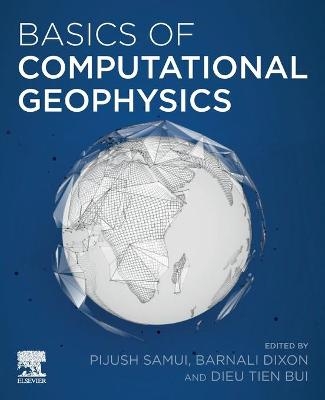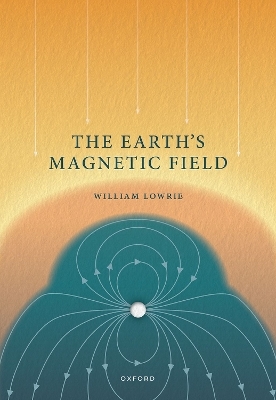
Basics of Computational Geophysics
Elsevier Science Publishing Co Inc (Verlag)
978-0-12-820513-6 (ISBN)
Dr. Samui is an Associate Professor in the Department of Civil Engineering at NIT Patna, India. He received his PhD in Geotechnical Engineering from the Indian Institute of Science Bangalore, India, in 2008. His research interests include geohazard, earthquake engineering, concrete technology, pile foundation and slope stability, and application of AI for solving different problems in civil engineering. Dr. Samui is a repeat Elsevier editor but also a prolific contributor to journal papers, book chapters, and peer-reviewed conference proceedings. Barnali Dixon is a professor and executive director of Initiative on Coastal Resilience and Adaptation (iCAR) and the director of Geospatial Analytics lab (G-SAL) at the University of South Florida. Her research interests include the development and application of spatially integrated decision support tools (SDST) using GIS, GPS and remote sensing tools for modeling and managing soil, land use and land-water interfaces (terrestrial sources and aquatics sinks, including coastal waters) using approximation tools. She is particularly interested in transdisciplinary modeling of land-water interface under climate change in the context of planning, adaptation, and resilience. I have secured over $1.5 million in funding, published 50+ refereed publications, nineteen monographs, and technical reports. Dieu Tien Bui is Professor in GIS, in the Department of Business and IT at the University of South-Eastern Norway, Norway. He obtained a Master of Engineering, at Hanoi University of Mining and Geology, Hanoi, Vietnam, a PhD at the Department of Mathematical Sciences and Technology (IMT), Norwegian University, and was postdoctoral researcher in the same department. His research interests include GIS, remote sensing, artificial intelligence and machine learning. He published journal and review articles, and book chapters. .
Part I: COMPUTATION & GEOPHYSICS APPLICATIONS
1. Synthetic ground motions of the 2005 Kashmir M7.6 earthquake at the bedrock and at surface using stochastic dynamic finite fault modelling with a dynamic corner
Hamid Sana
2. Global particle swarm optimization technique in the interpretation of residual magnetic anomalies due to simple geo-bodies with idealized structure
Arkoprovo Biswas and Anand Singh
3. Emerging Techniques to Simulate Strong Ground Motion
Sandeep Arora, Parveen Kumar and A. Joshi
4. Earthquakes: Basics of seismology and seismic computational techniques
Naresh Kumar Sr., Devajit Hazarika Sr. and Kalachand Sain
5. Significance and limit of electrical resistivity survey for detection sub surface cavity: a case study from, Southern Western Ghats, India
Mayank Joshi, Alka Gond, Prasobh. P. Rajan, B. S. S, Padma Rao B and Vivekanandan Nandakumar
6. A review on Geophysical parameters comparison in Garhwal and Kumaun Himalaya region, India
Sandeep Arora and Parveen Kumar
7. Liquefaction Susceptibility of High Seismic region of Bihar considering Fine Content
Sunita Kumari and Sufyan Ghani
8. Evaluating the reliability of various geospatial prediction models in landslide risk zoning
Chalantika L. Salui
9. Fractals and Complex networks Applied to Earthquakes
Denisse Pasten
10. Liquefaction as a seismic hazard: scales, examples and analysis
Hamid Sana
11. Landslide Prediction and Field Monitoring for Darjeeling Himalayas: A case study from Kalimpong
Neelima Satyam
12. Improvement of Shear Strength of Cohesive Soils by Additives: A Review
Amir H. Gandomi and Tamur Salik
13. Static stress change from 6 February, 2017 (M 5.8) earthquake Northwestern Himalaya, India
Mahesh prasad Parija, Arkoprovo Biswas and Shubhasmita Biswal
14. Remote Sensing for Geology-Geophysics
Surajit Panda and Krishnendu Banerjee
PART II: COMPUTATION & GEOSCIENCE APPLICATIONS
15. Prediction of Petrophysical Parameters using Probabilistic Neural NetworkTechnique
Nagendra Pratap Singh
16. Interpretation and Resolution of multiple structures from residual gravity anomaly data and application to mineral exploration
Arkoprovo Biswas
17. On fractal based estimations of soil subsidence.
Tatyana P. Mokritskaya and Anatolii Tushev
18. A Neural Network to predict spectral acceleration
Amir H. Gandomi, Ali R. Kashani, Mohsen Akhani and Charles V. Camp
19. Body tide prediction
Sung-Ho Na
20. Time series analysis of hydrometeorological data for the characterization of meltwater storage in glaciers of Garhwal Himalaya
Amit Kumar, Akshaya Verma, Rakesh Bhambri and Kalachand Sain
21. Trends in Frequency and Intensity of Tropical Cyclones in the Bay of Bengal: 1972-2015
OMVIR SINGH and Pankaj Bhardwaj
22. Application of machine learning models in hydrology: case study of stream temperature forecasting in the Drava River using coupled wavelet analysis and adaptive neuro-fuzzy inference systems model
Senlin Zhu, Marijana Hadzima-Nyarko and Ognjen Bonacci
| Erscheinungsdatum | 09.03.2021 |
|---|---|
| Sprache | englisch |
| Maße | 191 x 235 mm |
| Gewicht | 880 g |
| Themenwelt | Naturwissenschaften ► Geowissenschaften ► Geophysik |
| ISBN-10 | 0-12-820513-X / 012820513X |
| ISBN-13 | 978-0-12-820513-6 / 9780128205136 |
| Zustand | Neuware |
| Informationen gemäß Produktsicherheitsverordnung (GPSR) | |
| Haben Sie eine Frage zum Produkt? |
aus dem Bereich


